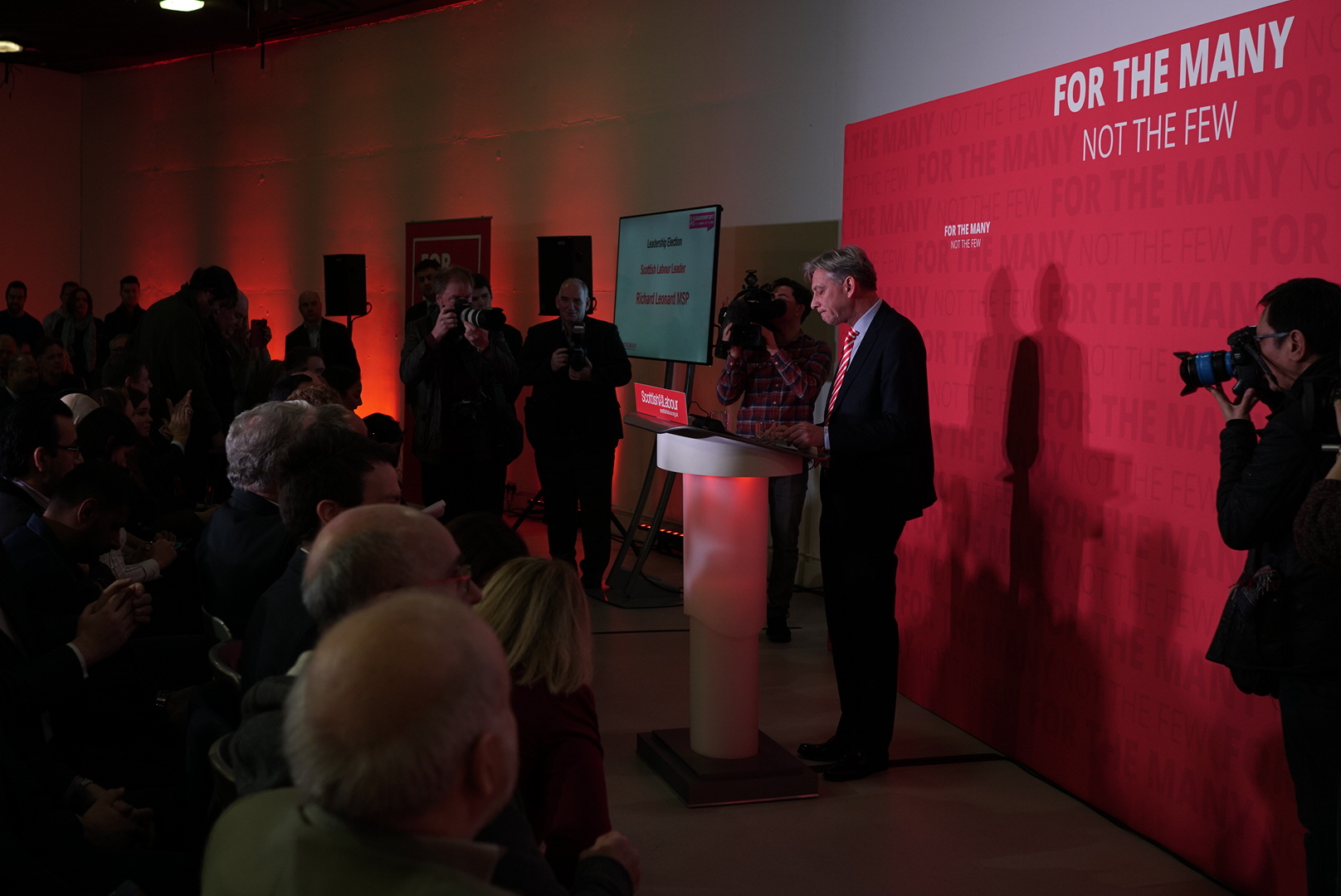Political newcomer Richard Leonard MSP has seen off former Deputy Leader Anas Sarwar to become the new leader of Scottish Labour.
The result of the contest was announced at an event in Glasgow today (18 November 2017).
In a vote reminiscent of the Jeremy Corbyn vs Owen Smith showdown, former trade union organiser Leonard – who is associated with the left of the party – outpolled former MP and current MSP Anas Sarwar – considered by many to be the more centrist candidate.
The election makes Leonard, who speaks with a clear Yorkshire accent, the first party leader in the history of the Scottish Parliament to be born outside Scotland.
But it is the triumph of Leonard’s left-field agenda, rather than his brogue, which makes his election remarkable.
Despite a long-standing desire among many party members to occupy the ideological space to the left of the Scottish National Party (SNP), Scottish Labour members have in recent times backed more ‘moderate’ leadership candidates.
The last time party members were asked to choose between a ‘centrist’ and ‘left’ candidate they opted, very marginally, for the former – Owen Smith was backed by 6,856 party members in Scotland, whilst 6,042 supported Corbyn. A little closer to home, the leadership election in 2014 saw veteran Labour MP Jim Murphy comfortably defeat left-winger Neil Findlay MSP.
So, what has changed?
Although the dust is still settling on this result, it seems clear that Corbyn’s relative success earlier in the year has persuaded at least some Labour members that a leader with left wing credentials can make electoral gains.
Whether Leonard can replicate this in Scotland is unclear. In every leadership election since 2007 (and there have been five by my count!) the Scottish Labour Leader vacancy is invariably described by pundits as the least desirable position in Scottish politics. And this time the position is perhaps more challenging than ever.
Leonard now has the unenviable task of positioning Scottish Labour as the UK negotiates its exit from the EU. No option seems appealing – adopt Corbyn’s coyness and allow the SNP free rein to use Brexit to angle for #indyref2; campaign for a softer exit (or no exit at all) and run the risk of playing into the SNP’s constitutional mischief making and/or causing a rift with a UK Labour which is unwilling to alienate Brexit voters in its North of Engalnd heartlands; or back Brexit and go against the majority of Scots who voted remain.
Then there’s the proper politics – namely, taxation and public spending. Will Leonard’s clearer left-wing stance entice Labour-turned-SNP voters back to the party? Certainly those who have spotted Corbyn’s popularity north of the border hope so, but they perhaps underestimate how successful the SNP has been in making the constitution the principle issue for many people when choosing who to support at Holyrood.
Leonard certainly comes without the #indyref baggage of the longer serving Labour parliamentarians, including Anas, but it will take a campaign of Corbynista-esque fervour to reset the Scottish political landscape. After a decade in power there is a definite sense that the SNP government’s Labour-light, managerial style of politics has had its day, so there is hope.
But as a relative newcomer – he is part of the 2016 Scottish Parliament intake – Leonard’s main challenge, in the short term at least, will be to establish himself as a recognisable figure to the average Scottish voter (and to distinguish himself from the not-dissimilar looking Corbyn). With so much politics competing for the news agenda at the moment, this in itself is no small task.

